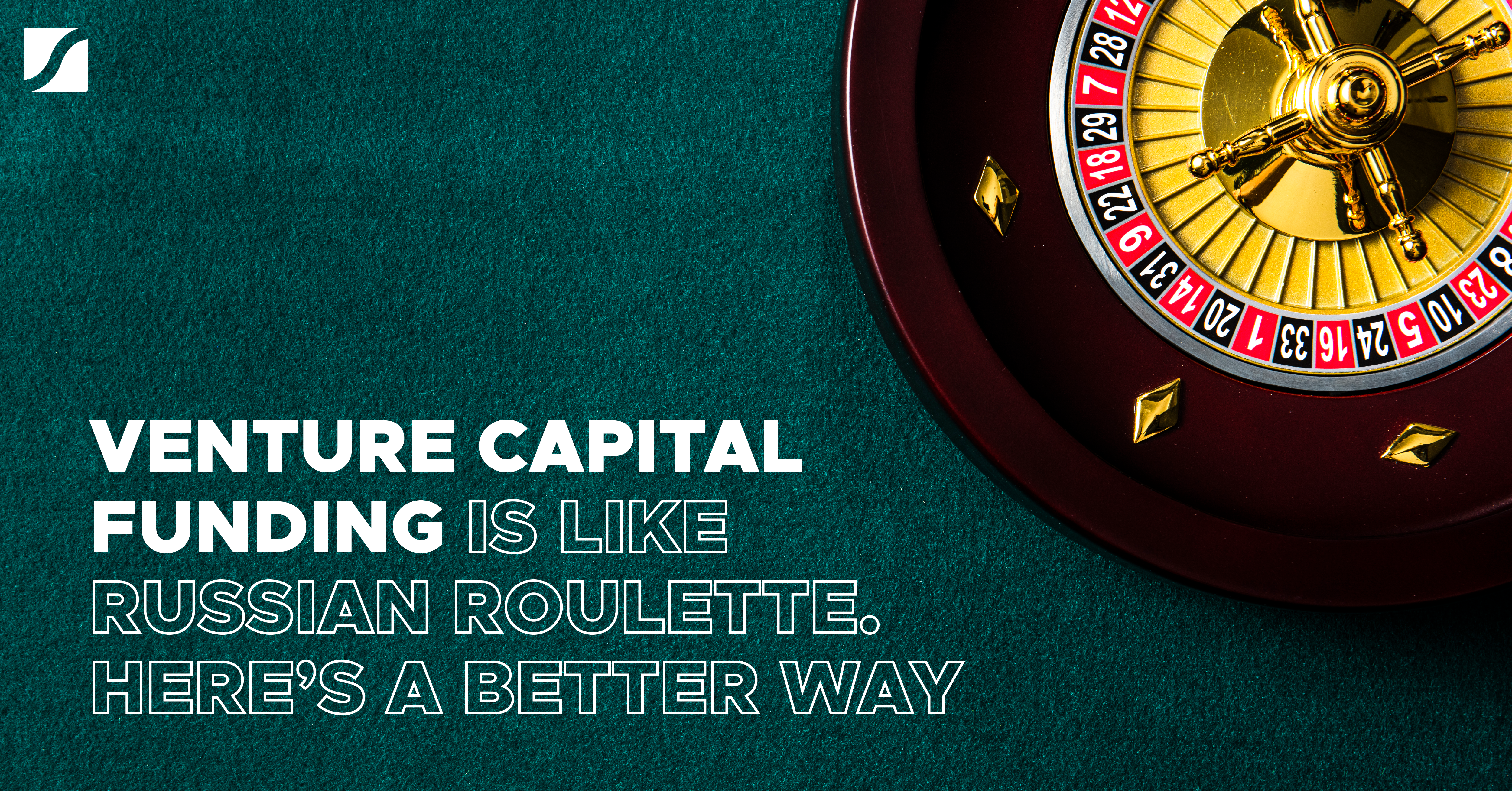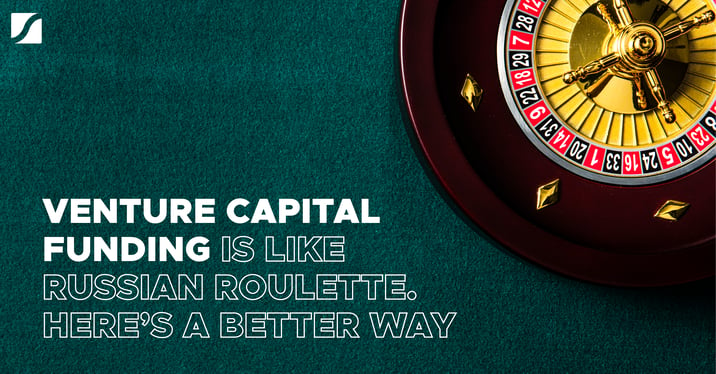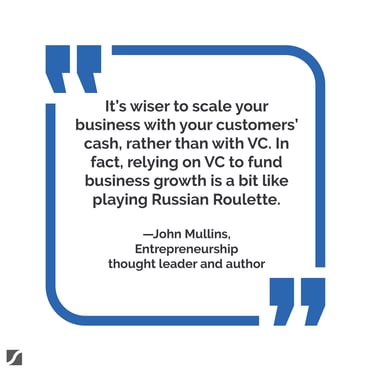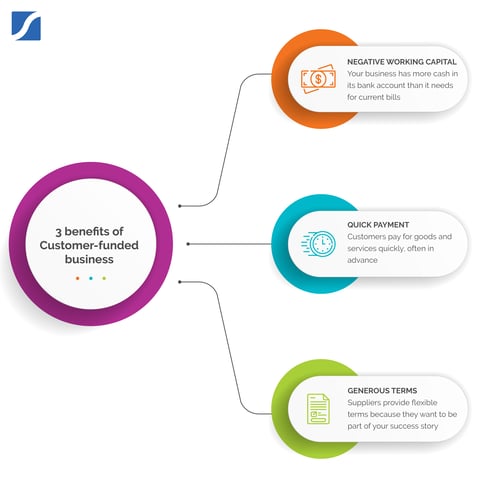Venture Capital Funding Is Like Russian Roulette. Here’s A Better Way


We’ve all heard the siren song of venture capital-fueled success stories. The growth of the Apples, Googles, and Facebooks of the world has become the stuff of legend.
But to focus on the rise of these external equity-funded companies alone ignores the type of funding that often is a better choice.
Entrepreneurship thought leader and author John Mullins says it’s wiser to scale your business with your customers’ cash, rather than with VC. In fact, he says, relying on VC to fund business growth is a bit like playing Russian Roulette.

Is that a game you want to play?
John says that a better—and less dangerous—option is to fund your business through your customers’ cash. He’s an associate professor of management practice in marketing and entrepreneurship at London Business School. He’s also written extensively about customer-funded growth, with publications including his book The Customer-Funded Business: Start, Finance, or Grow Your Company With Your Customers’ Cash.
He’s shared his expertise with business leaders, executives, and entrepreneurs through Growth Institute’s blog, in a recent webinar, and in his Master Business Course “Scaling Up Without VC.”
And now, as the world copes with economic uncertainty that could limit the cash available to finance business growth for months—or years—to come, it seems like the perfect time to shine a spotlight on John’s work. Let’s take a look at another, often better, source for funding as you scale your business: customers.
The Allure Of Venture Capital
John says the well-known stories of VC-backed companies like Apple, Google, and Facebook lure the business world into thinking that the approach those businesses used for financing is best.
And those stories aren’t the only reason the corporate world too often equates more VC funding with more success. Other reasons include:
- Cocktail parties. More external equity raised means more opportunities to tell everyone about it, as a sign of success, at social events.
- Astonishing returns. Research that John cites showing the success of VC-backed enterprises, from Josh Lerner of Harvard Business School, does show occasional returns as high as 700%.
- “Easy money.” The world often sees venture capital as easy to obtain.
Unfortunately, eye-popping success stories about VC-funded companies are the exception, rather than the rule. And that “easy money” everyone clamors for comes at a price.
The Trouble With Venture Capital
What’s discussed less often are the complications that VC can cause in your efforts to scale up. John calls this “the real cost of taking private equity or venture capital”—and that cost has 5 aspects:
- Months of lost time spent raising rounds of private equity, time that you could be spending on the many other responsibilities that come with growing a business
- Value from your business that goes to your investors as part of the shareholders agreement, and that value is likely to be in the 7 figures or more
- Your effort, their reward, with the investors taking money that you and your team earned
- Weakening of control, with shareholders agreements generally including language that can erode your control of the business if it doesn’t meet certain success criteria
- Loss of time, money, and freedom, as you raise money and give up some of your control
In other words, John says, “The day you take a dollar, pound, or rupee of private equity or venture capital money is the day you’ve agreed to sell your business.”
Is that what you want?
A Better Way: Customer-Funded Growth
If you’d rather hold onto the time, money, and freedom you typically concede when you accept external equity, then turning to your customers to fund your growth is the way to go. There are 5 models you can choose from to attract customer funding, and Growth Institute relies on all of them.
The 5 types of customer funding, along with examples of companies that used those models, are:
-
Pay-In-Advance Models
Examples: Dell, Tesla, consultants, and most service businesses
The most straightforward way to secure funding from customers is through pay-in-advance models. In this type of customer funding, the business convinces the customer to pay something in full or in part before they receive what they bought.
By establishing your company’s value in solving a customer’s problems, you can negotiate with that customer to get funding up front. At Tesla, for example, customers put down $1,000 each toward the purchase of the first roadster before the company even produced it.
-
Matchmaker Models
Examples: Expedia, Airbnb, Henco Logistics
Matchmaker models of customer-funded growth bring buyers and sellers together, with the matchmaker never owning—and often never touching—what the business is selling. John calls this method the most glamorous approach to securing customer funding, thanks to well-known matchmaker model success stories like Airbnb and Uber. It requires little funding because there’s no need to purchase inventory to sell.
Henco Logistics, for example, is a freight-forwarding business that makes logistical connections between businesses to facilitate freight shipping. It’s basically an information business, and it’s one of the largest freight-forwarding companies in Latin America.
-
Service-To-Product Models
Example: Microsoft, GoViral
Service-to-product models of attracting customer funding are the most ingenious models, John says, with the business starting as one that provides a service and pivoting to one that produces products.
For example, Danish company GoViral got its start creating attention-grabbing ads for companies. It transformed into a business that offers a platform for customers to design their own ads, with tools to help those customers track the reach of those ads.
-
Subscription Models
Examples: Periodicals such as the “Wall Street Journal,” Netflix
In subscription models of customer-funded growth, the customer agrees to buy a good or service that the company delivers repeatedly and over a period of time.
Products or services that are perishable, needed regularly, or that offer convenience are good candidates for this type of customer funding. Netflix, for example, gains a predictable cash flow each time a customer subscribes.
-
Scarcity Models
Examples, Zara, Gap
John’s own background includes the use of the scarcity approach to customer-funded growth. Through these models, a business restricts sales of an item to a limited quantity and short period of time.
At Gap in the late ’70s, when John was running multiple locations for the clothing retailer, stores opened only at the busiest times of the year: spring break season, back-to-school, and Christmas, with demand fueling the company’s rapid growth.
Benefits Of Customer-Funding Models

Attracting customer funding over VC funding isn’t always easy, and it’s not the wiser option for every company. For example, if you know you want to sell your business in 3 to 5 years, or if you want to fuel already-strong growth, VC financing might be the better choice.
But, for most companies, John says that becoming a customer-funded business is a smart choice that often yields benefits such as:
- Negative working capital—Your business has more cash in its bank account than it needs for current bills
- Quick payment—Customers pay for goods and services quickly, often in advance
- Generous terms—Suppliers provide flexible terms because they want to be part of your success story
And these positives come without the baggage and meddling that investors often bring.
Find The Best Funding Source For Your Business
What will you choose for your business: the mystique of VC funding or the freedom of customer funding? If you want more details to help you determine if customer-funded growth is right for your business, I encourage you to watch the replay of John’s recent webinar, “Growth Sucks Cash: Learn The 5 Ways You Can Fund Your Next Growth Spurt With Your Customers’ Cash.”


-(1)-small%20(1).png)
